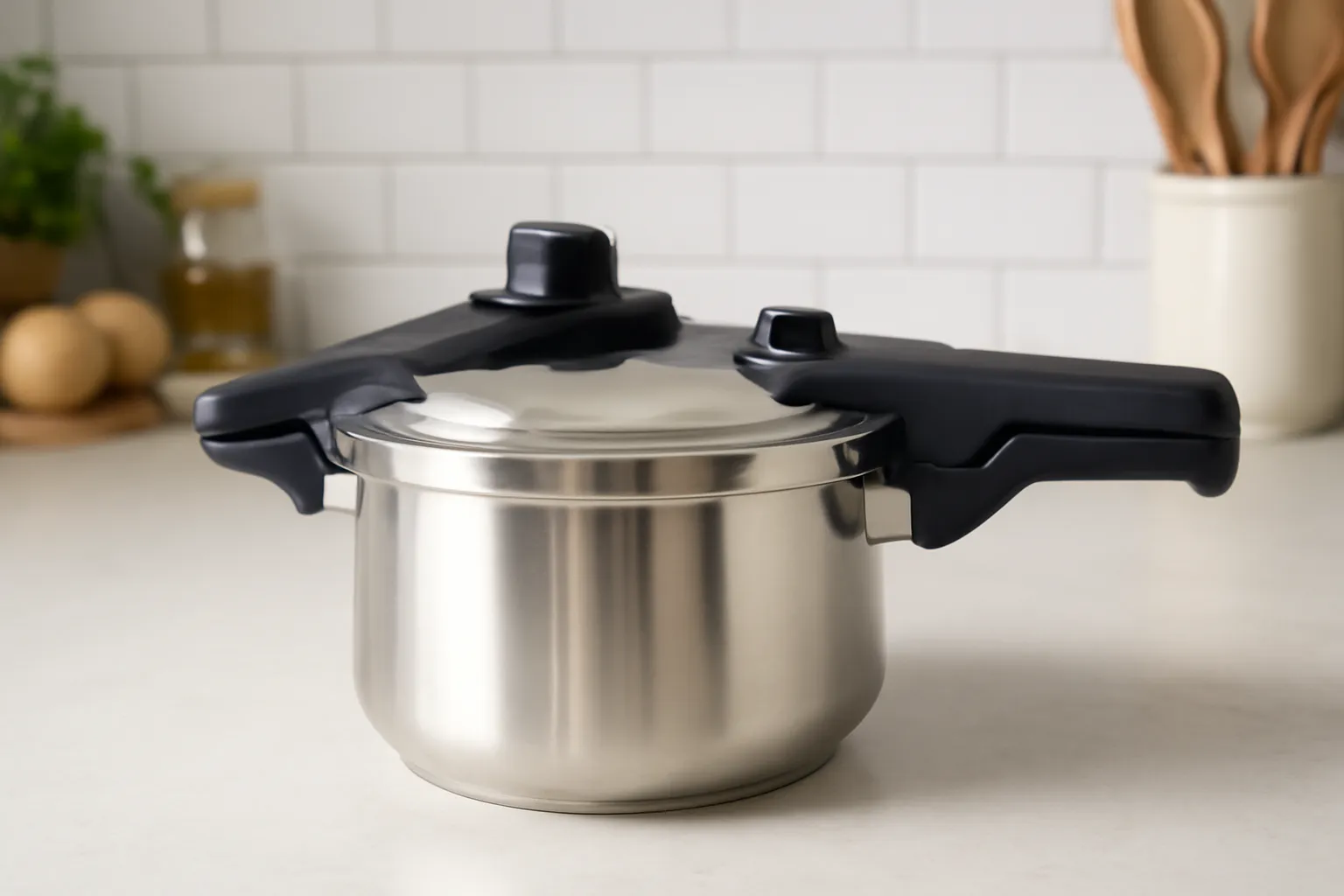The Kitchen Art Pressure Cooker is a kitchen essential designed for convenience, speed, and efficiency. Whether you’re a seasoned chef or a home cook, this appliance can significantly improve the way you prepare meals. With its sleek design and powerful features, the Kitchen Art Pressure Cooker allows you to cook your favorite dishes faster while preserving flavor and nutrients.
Are you looking for a reliable and efficient pressure cooker for your kitchen? Learn everything you need to know about the Kitchen Art Pressure Cooker, from its packing and rubber parts to essential care tips and how to extend its lifespan!
Kitchen Art Pressure Cooker Packing: Why It Matters
The packing of a Kitchen Art Pressure Cooker is more than just a protective outer layer. It plays a crucial role in ensuring the cooker functions safely and efficiently. Typically, the packing refers to the sealing materials that prevent leaks and ensure proper pressure build-up during cooking. Here’s why the packing is so essential:
Key Functions of Packing:
-
Prevents Pressure Leaks High-quality packing materials prevent steam from escaping, ensuring the cooker maintains the right pressure.
-
Ensures Food Safety Proper packing guarantees that the food cooks thoroughly by trapping steam and heat inside.
-
Prevents Contamination Packing materials help avoid any external contaminants from entering the cooker during storage or cooking.
-
Maintains Cooker Efficiency Good packing helps maintain optimal cooking temperatures and prevents heat loss.
Types of Packing Materials Used:
-
Rubber Seals Most commonly found around the lid and valve areas, rubber seals are flexible and durable, providing a tight seal.
-
Silicone Gaskets These are often used for added durability and temperature resistance, ensuring the cooker operates under high pressure.
-
Metal Springs Some high-end models use metal springs as part of their packing to create a better seal.
Taking care of your packing materials ensures your Kitchen Art Pressure Cooker continues to function effectively for years. Remember to replace the packing when it shows signs of wear and tear, as old or damaged seals can result in inefficient cooking and potential safety risks.
👉 Learn More About Cooker Packing 👈
Kitchen Art Pressure Cooker Handle: Features and Care
The handle of a Kitchen Art Pressure Cooker is one of its most important features. Not only does it provide a secure grip during cooking, but it also contributes to the overall safety of the cooker. A sturdy handle ensures that you can easily open and close the cooker, even under pressure.
Handle Design Features:
-
Ergonomic Grip The handles are designed for comfort, offering an ergonomic grip that reduces hand strain while lifting or turning the cooker.
-
Heat Resistance Handles are made of heat-resistant materials like plastic or silicone to ensure they don’t get too hot during cooking.
-
Locking Mechanism Many models come with a locking handle mechanism to ensure the lid stays securely in place, preventing any accidental openings while under pressure.
Tips for Handle Care:
-
Clean Regularly Make sure to clean the handles after each use to remove grease or food residue.
-
Inspect for Damage Check for cracks or looseness. A loose or damaged handle could pose a safety risk during cooking.
-
Avoid Using Sharp Objects Never use sharp utensils near the handle to prevent scratching or damaging the surface.
By properly maintaining your cooker’s handle, you ensure that the cooker is always safe and easy to use, allowing you to enjoy your meals with confidence.
👉 Learn More About Handle Care 👈
Kitchen Art Pressure Cooker Rubber: What You Need to Know
The rubber components in a Kitchen Art Pressure Cooker are critical for maintaining the appliance’s overall performance. Rubber parts, including the sealing rings and gaskets, help create airtight seals, preventing steam from escaping and ensuring efficient cooking.
Functions of Rubber in the Pressure Cooker:
-
Sealing and Pressure Retention Rubber gaskets form the tight seal necessary for building pressure inside the cooker. Without this, the cooker would not reach its optimal cooking conditions.
-
Safety Rubber parts ensure that the cooker is safe to use by preventing dangerous pressure leaks.
-
Temperature Resistance High-quality rubber can withstand the intense heat generated during pressure cooking, maintaining its flexibility and effectiveness.
Types of Rubber Parts:
-
Gasket Rings These are used around the lid to create a secure, airtight seal.
-
Valve Seals Rubber seals are often used in the pressure release valve to control the flow of steam.
-
O-rings These are used in various parts of the pressure cooker to ensure a tight seal between different components.
Rubber Maintenance Tips:
-
Clean Regularly Wash rubber parts with warm water and mild soap to remove food residues.
-
Replace When Worn Rubber seals degrade over time. Replace them if they become cracked, brittle, or lose their flexibility.
-
Avoid Overstretching Be careful not to overstretch or damage the rubber when cleaning or installing it.
Ensuring that the rubber components are in good condition is essential for maintaining both the safety and efficiency of your Kitchen Art Pressure Cooker.
👉 Learn More About Rubber Care 👈
Conclusion: Maximize Your Kitchen Art Pressure Cooker’s Lifespan
In conclusion, the Kitchen Art Pressure Cooker is a powerful kitchen tool designed to help you cook faster and more efficiently. By understanding the importance of packing, handles, and rubber parts, you can ensure the cooker operates at its best and lasts longer. Regular maintenance, including checking and replacing seals, cleaning the handle, and ensuring proper care of rubber parts, will keep your pressure cooker functioning optimally.
Whether you’re cooking for a family or making a quick weeknight meal, this cooker can make your life easier. Proper care will ensure that you continue to get great results every time you cook.






